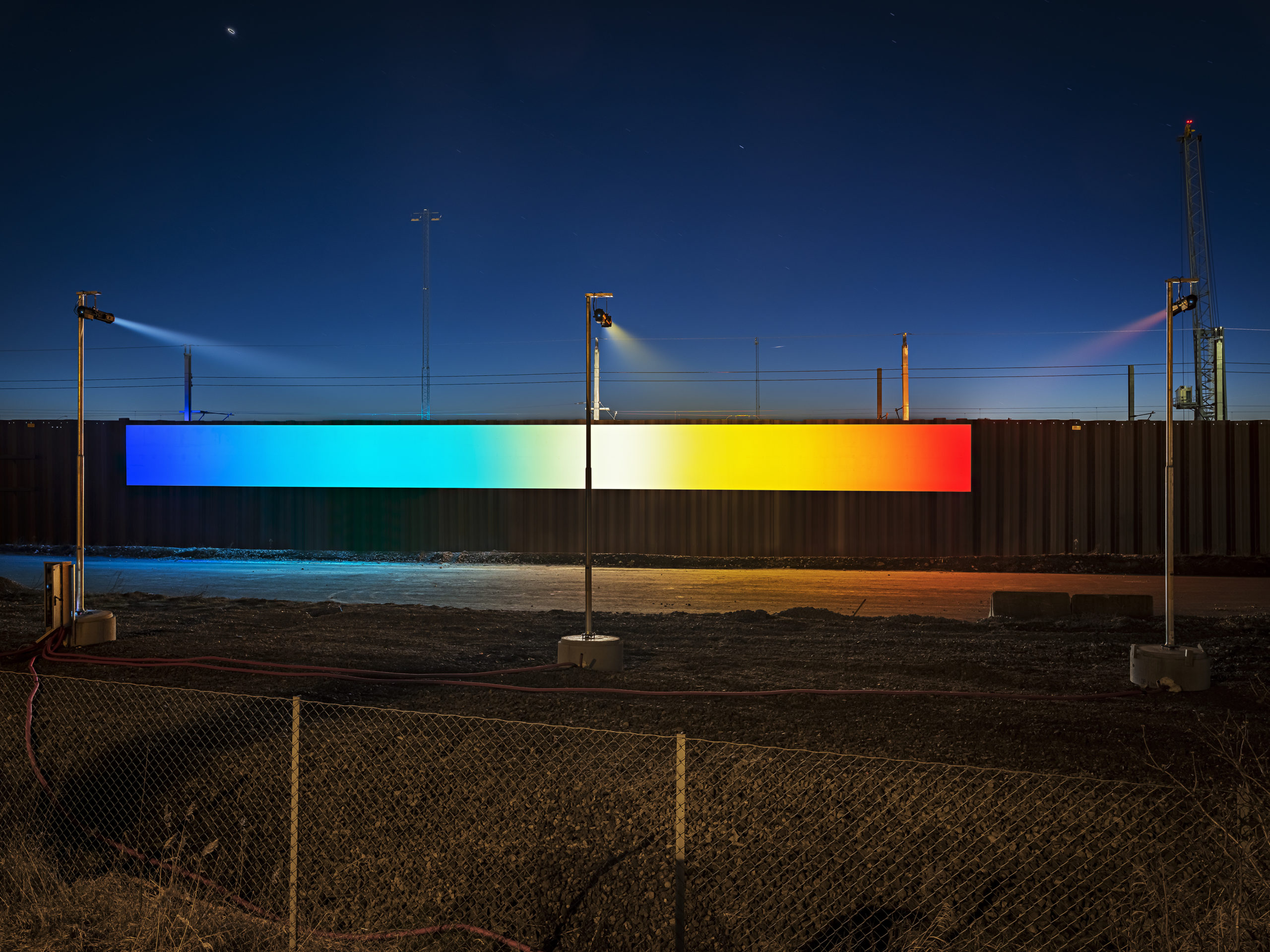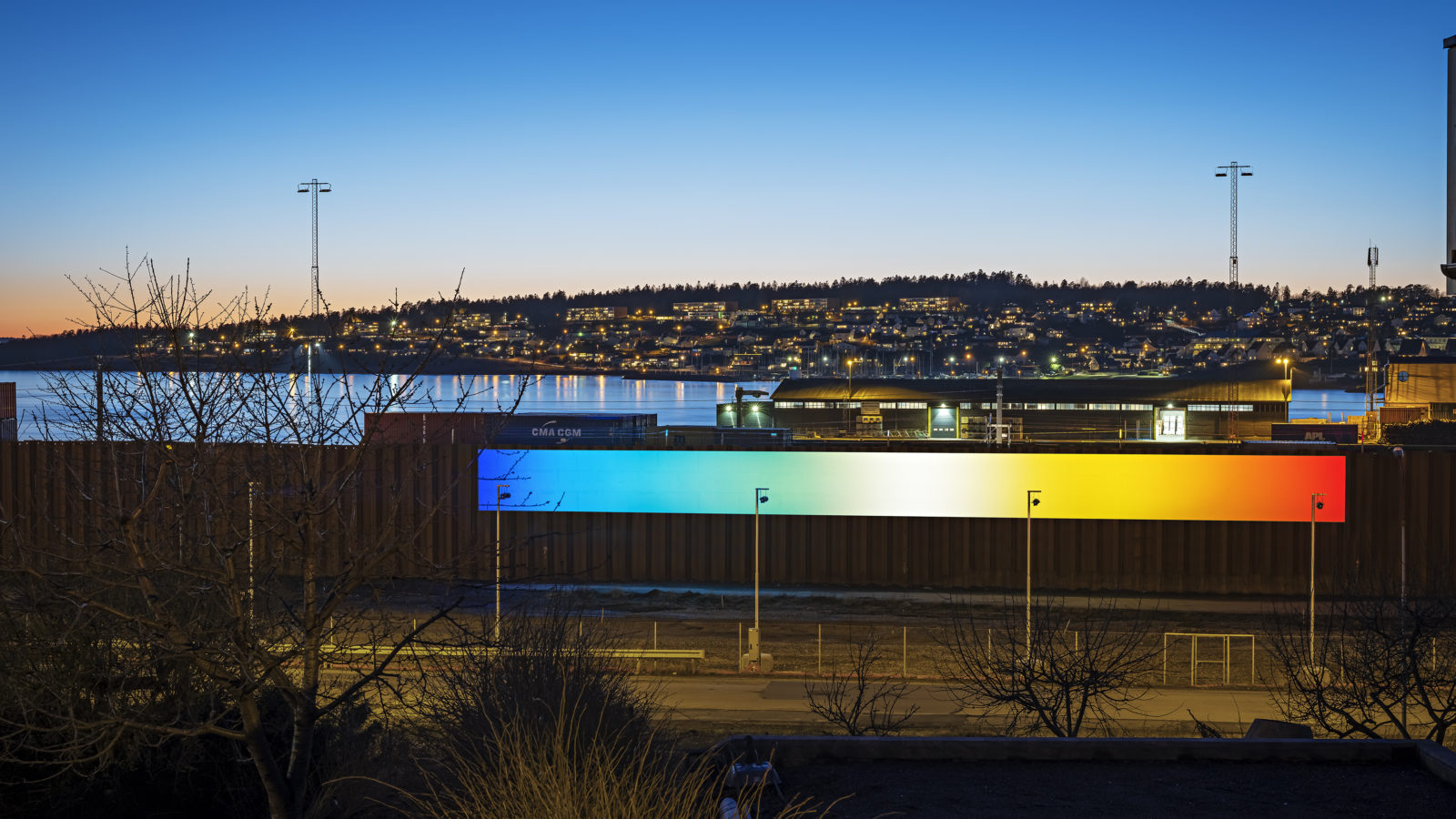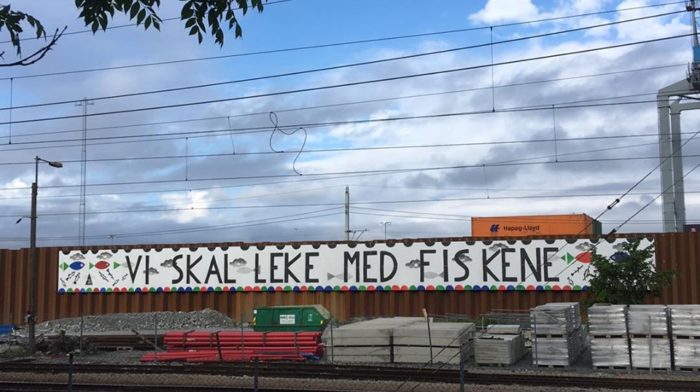Jakob Oredsson is the artist behind Temperature Tuning (for Moss) which has adorned the spuntvegg by Værlegata street and Moss train station during the winter of 2019-2020. In this interview you’ll get to know the artist, the art work and the processes leading to the collaborative project involving Oredsson, Galleri F 15, Bane NOR and Moss municipality.
How did this project begin and what motivated you to take part?
My engagement in this project began with, and continued through, dialogue with Dag Aak Sveinar, director of Galleri F15, around potentials for light art on the sheet pile wall along Værlegata. An open dialogue, a process through which we have discussed many possible ideas and thought many intriguing thoughts. Reflecting upon various ways of realizing an artwork for this specific environment, which is relevant for Moss and relates to phenomena such as weather and technology, sea and harbor, river and industry.
This was from the outset an interesting project for me to engage in. Partially because of the context and scale, as well as for the opportunity to create a new work for Moss and its inhabitants, in a location where light art is not usually encountered and experienced.
Moss is a city which has become important to me for several reasons. Partially because of my studies in scenography at Norwegian Theatre Academy in the neighboring city Fredrikstad, but also through participation in a series of projects connected to the city, through which I have been following the city planning development over a longer period of time. I have been particularly engaged in the recent developments of public spaces, more specifically through several smaller projects dealing with the past and future of the areas around Moss river.
Have you previously realized similar projects?
The last years I have realized a series of artworks in public spaces, many with light as medium. Common for these works have been that they exist through and with their context, being simultaneously part of and separate from it. Works which seek to encourage curious ambivalent encounters between art and context, through a variety of temporal and spatial scales. These works question binaries such as subject-object, active-passive and culture-nature, through accentuating ambiguity.
A work relevant to mention in relation to Temperature Tuning (for Moss) is Temporary Beacons (for Fredrikstad), which was developed with scenography students at Norwegian Theatre Academy in Fredrikstad 2016. This work consisted of a changing rhythmical composition with a series of mobile light masts along the river Glomma in central Fredrikstad, which lasted 24 hours. With Temporary Beacons we wished to explore spatial and temporal orientation in relation to light in urban contexts, as well as experiences of local time and creation of collective memories in public spaces.
I realized my first permanent public light work, Double Focus, in Århus 2018. The work is placed in relation to a pedestrian and bicycle bridge. It consists of two large circular glass sheets with a white radial gradient print, which are lit from within. Through their positions, optical and illuminating qualities, in relation to the context they transform with current weather and light conditions, time of day and year, as well as the movement of the passersby. I consider Double Focus an ever-changing image of the landscape and simultaneously part of the landscape.
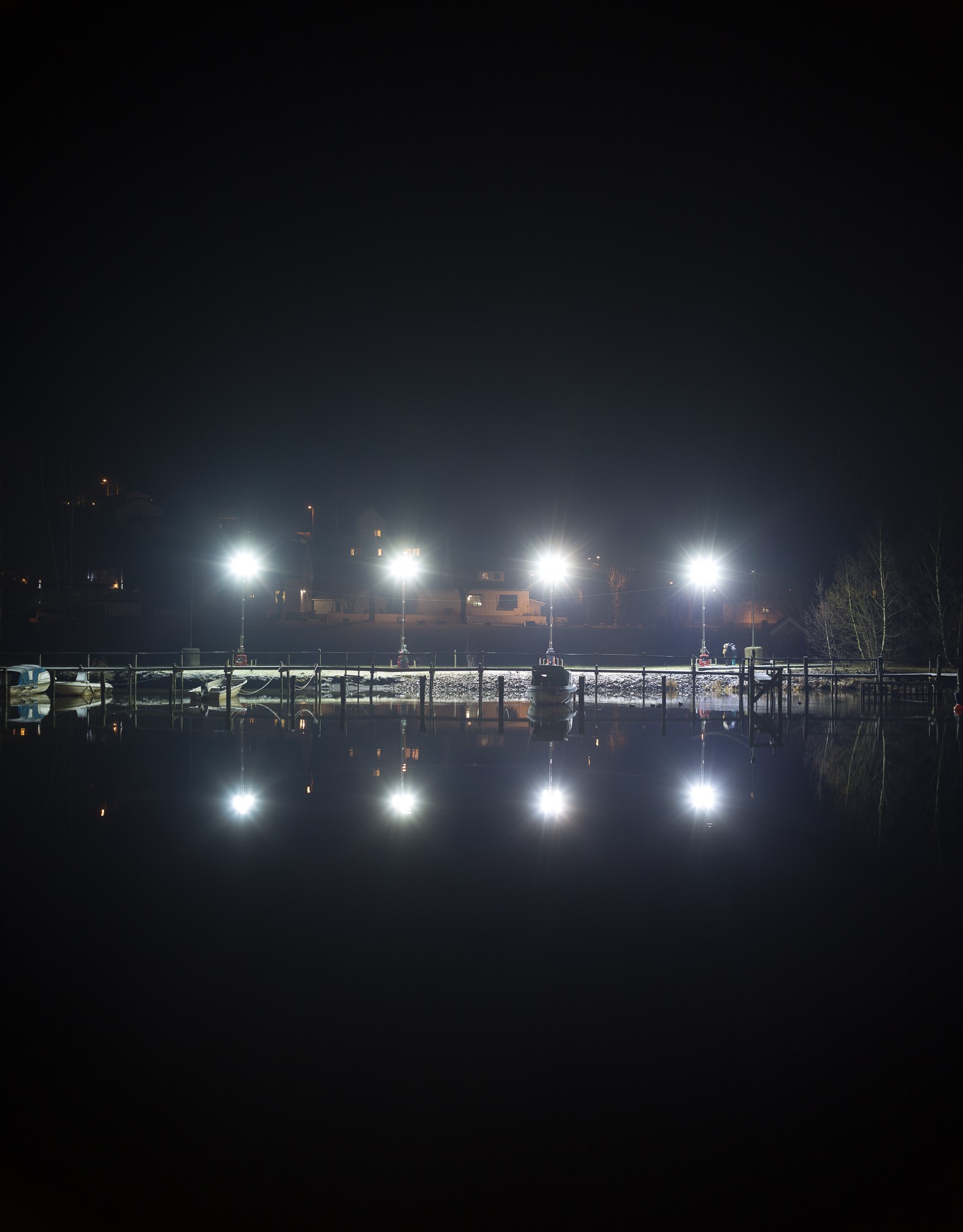
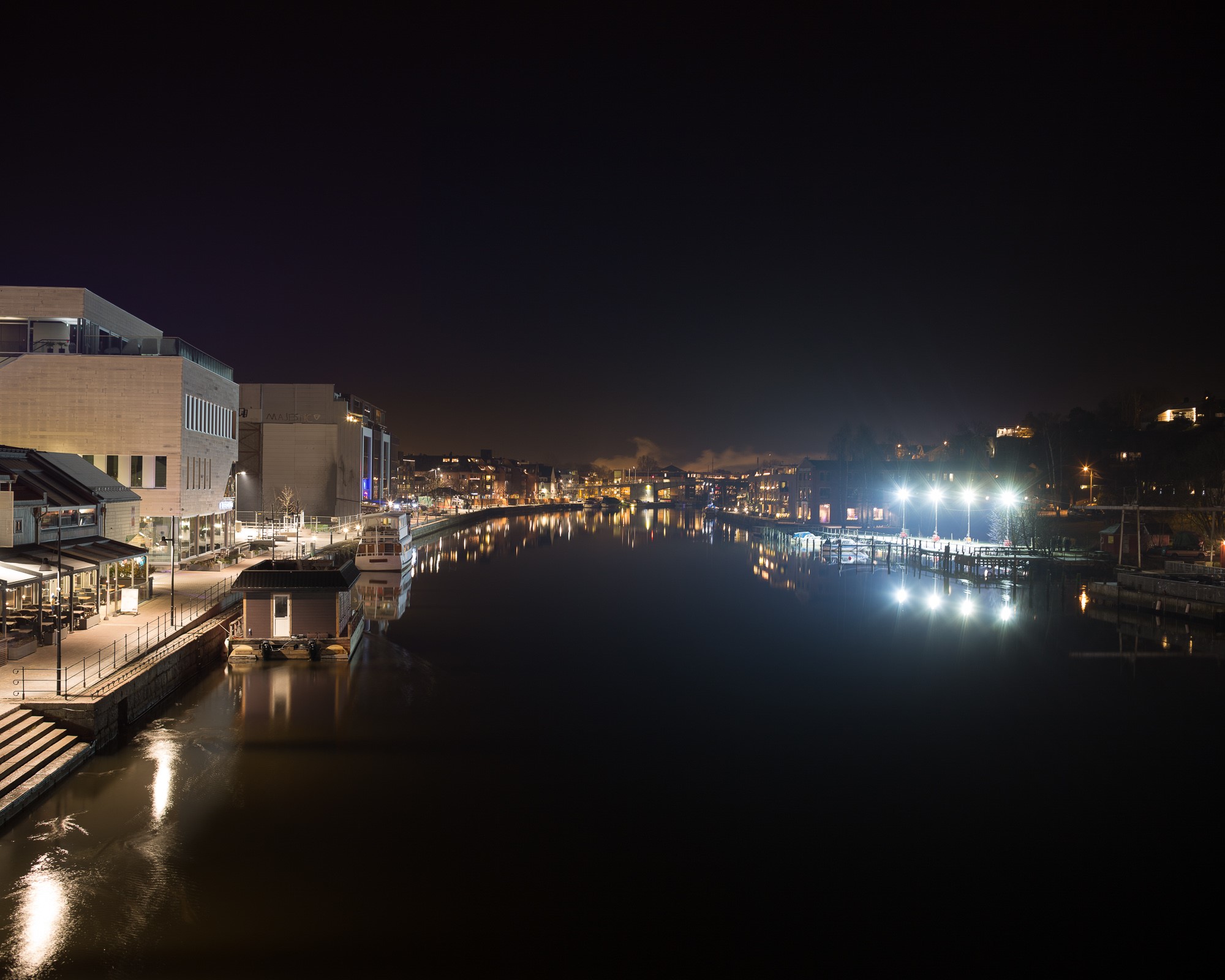
Temporary Beacons (for Fredrikstad) was developed in collaboration with bachelor students from Academy of Performing Arts in Fredrikstad i 2016. Photo: Hampus Berndtson
What does the placement mean for the work?
The placement of the work means everything. The work would never have taken on this appearance if it was not for the surroundings, the spatial conditions with the railway, harbor, sky, bay and settlements in the distant background. Creating art for public spaces requires a sensitivity for the place. Public spaces are intrinsically collective and built upon co-existence. A public work should participate in this co-existence, as well as being open for manifold perspectives.
For me it is important to consider many possible positions and perspectives from which the work may be experienced. What makes Temperature Tuning relevant is how it exists together with the color temperatures of the surroundings. In this sense the work has a character which I often seek, qualities through which it becomes unclear where the work ends, and the context begins. The work accentuates color temperature, nuances in a sunset sky, crisp tones in a starry night sky, the warm light of halogen lamps in the harbor, the cold led light from nearby streetlights, as well as the glow from a light bulb in a distant kitchen over in Framnes. Color temperature does not distinguish between nature and culture, all light is light, and the work embraces this principle.
The correlation between color temperatures in the work and the context, give rise to a situation where both simultaneously, in relation to an observer, are measured and tuned against each other. As the light intensity of the work varies with an unpredictable rhythm this situation is emphasized. This requires the observers gaze to constantly adjust in relation to the colors of the panels and the colors of the surroundings. Through its placement the experience of the work is ambiguous in a variety of ways, one might experience it as both ephemeral and static, intense and dull, large and small.
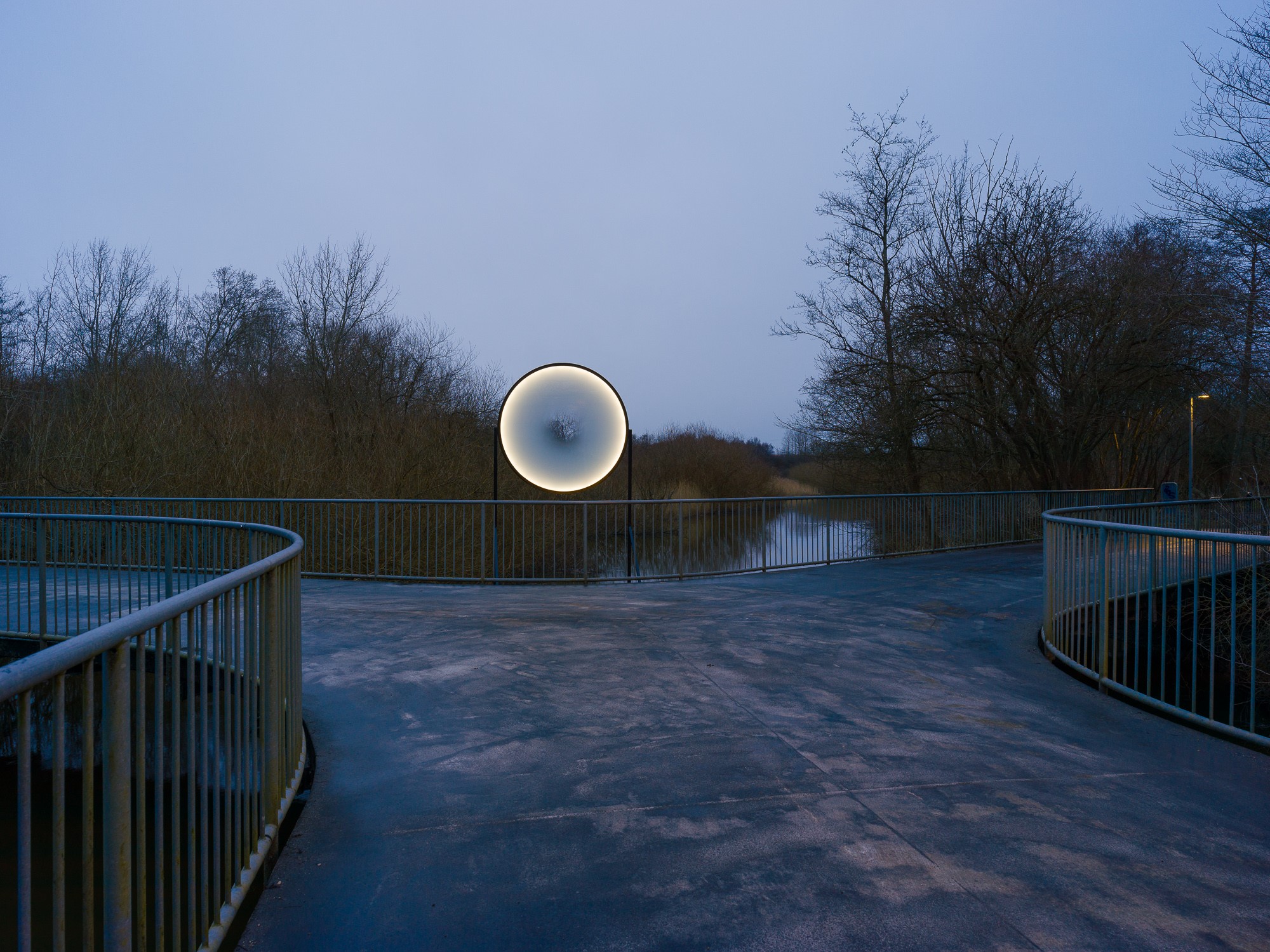
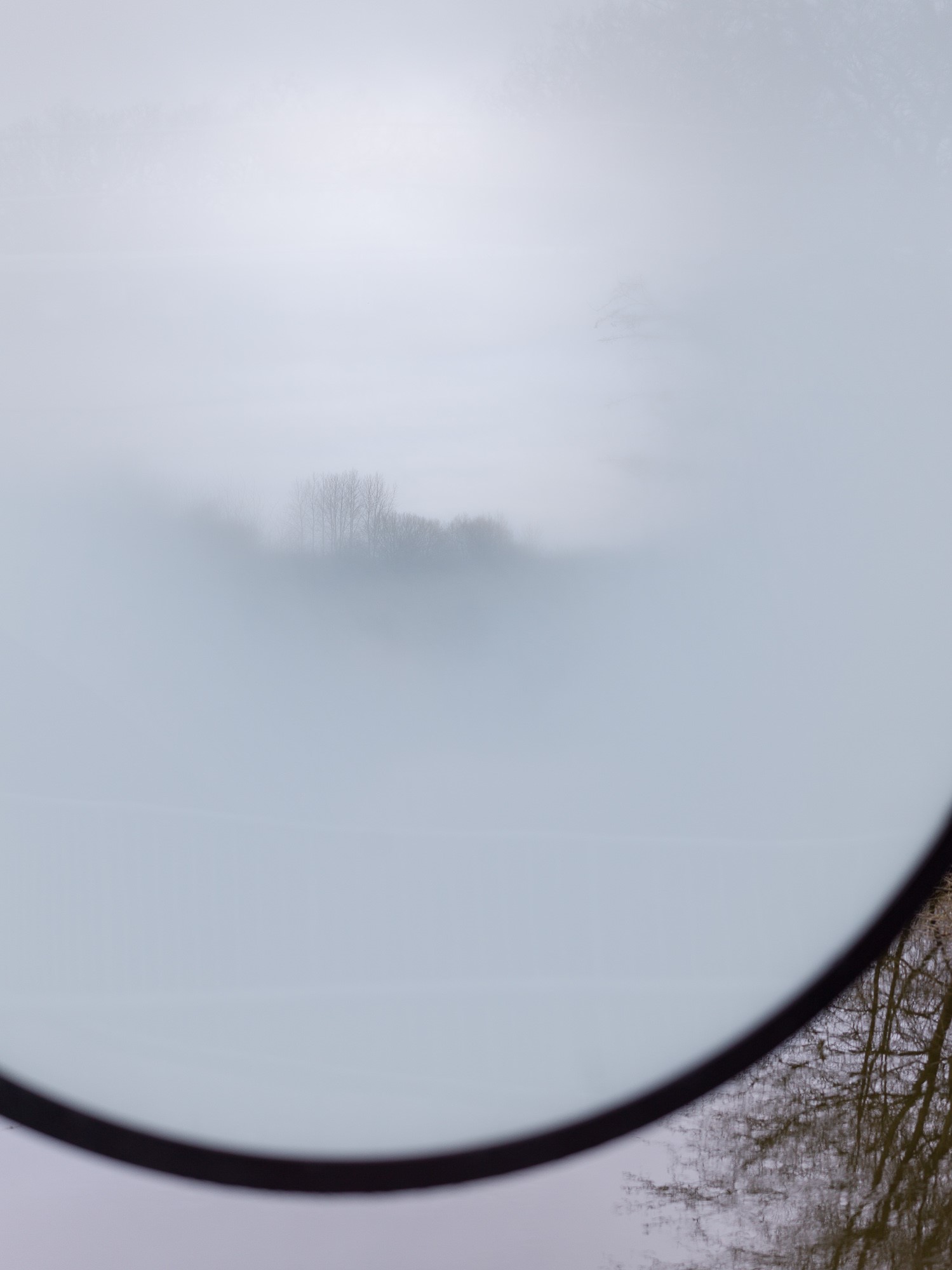
Double Focus changes with weather and light, the time of day and year and with the movement of the people passing by. Photo: Hampus Berndtson
The artwork may be experienced both scientifically and emotionally engaging. Can you say something regarding the balance?
One might say that Temperature Tuning has scientific features as the color gradient in the work simulates the kelvin temperature scale. Kelvin is the base unit for measuring color temperature, light with warm color temperature has lower kelvin values and light with cold color temperature higher. The work contains a gradient from 1 000 kelvin, warm red, to 11 000 kelvin, cold blue. Experience of color is of course relative, but references for understanding might be a candlelight with a warm color temperature and a kelvin value of ca 2 000, or a clear blue sky with a cold color temperature and a kelvin value of ca 10 000.
Another aspect of the work which might evoke scientific associations is its measuring capacity. The entire row of panels function as a large measuring instrument. A basic comparison may be the process of holding up a color chart from the paint shop. Through this action one has a color spectrum as a tool for experiencing the colors in the surroundings in relation with.
The scientific features of the work are probably not what strikes the viewer initially, but they might be recognized through following reflection. Experiencing the color spectrum on the panels in relation to the surroundings is what strikes me when encountering the work, the feeling of feeling the colors, inside and outside the panels. Through this experience I hope the observer becomes aware of the vast variation of color temperatures both in the foreground and background. That the work becomes an invitation into a state of being close from afar, distantly near, an ambiguous relation to what surrounds us, and what we simultaneously take part in. I would call this a kind of solidarity with the given context, without rational reason or meaning, and for me this is an emotionally engaging experience. Temperature Tuning exists through solidarity and symbiosis with the context.
Ecological awareness is a key notion for me, that is an awareness of the continuous interrelations between beings and their environments. This means an awareness of the endless variety of spatial and temporal scales in any given context, and that they are all interconnected, co-existing. Here one may direct attention to an ongoing balance between scientific and emotional, certain and ambiguous, known and unknown, through simultaneously being part of the context, being the context, and being separate from it.
How may Temperature Tuning (for Moss) be situated in relation to other artworks in public spaces?
The work may be situated in a long tradition of so-called site-specific art with roots in the land art, as well as light and space movements of the 60’s. Even though I do not categories the work as site specific, as my impression is that this term has lost meaning. Each artwork exists in relation with the site it is placed within, even if it seeks it or not. Still I would like to emphasize that Temperature Tuning exists through symbiosis with the context, and in my view, it only exists in this way. The work is less about itself and more about its surroundings, without excluding one or the other.
Through my working process these type of works appear through spending long periods of time with the site, being with it, and developing a certain relationship to it. The work includes experiencing the location through different speeds, both by foot and car, as well distances and positions. Photographic studies are also an important working tool. In my understanding this is a process where the distinction between active and passive action is blurred. I try to let the work come to me, rather than finding the work.
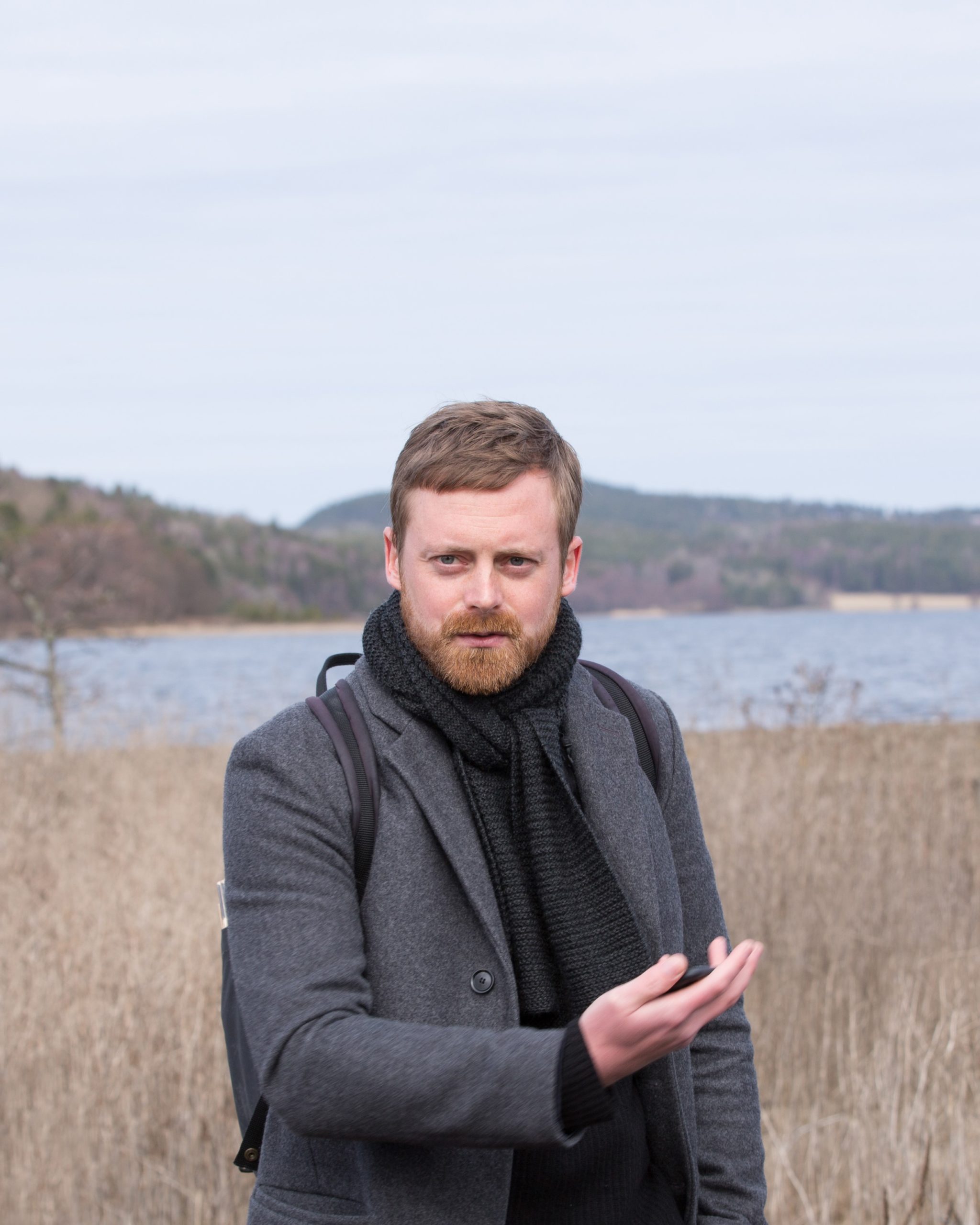
Jakob Oredsson with Sandbukta in Moss in the background. Photo: Lasse Leonhardsen
Artist biography
Jakob Oredsson is a Swedish artist, architect and scenographer working at the intersection of these practices. Oredsson is currently Assistant Professor in Scenography at Norwegian Theatre Academy. After graduating with a BA in Scenography from the Norwegian Theatre Academy, Jakob studied architecture at The Cooper Union and The Pratt Institute in New York, as well as The Royal Danish Academy of Fine Arts in Copenhagen, where he received his MA in Architecture.
Through art Oredsson seeks to encourage curious ambivalent encounters between work and context, perceiver and perceived, through a variety of temporal and spatial scales, while questioning these categories. Work which insistently queers binaries such as art-context, active-passive and culture-nature, embracing flat ontology.
Work has been presented at Atelier Hotel Pro Forma (DK), Berlin Light Art Weekend (DE), Black Box teater (NO), Bratislava Design Week (SK), The Cooper Union (US), Copenhagen Light Festival, Copenhagen Stage (DK), Factory Studios (US), Festival of Independent Performing Arts (DK), Galleri CC (SE), Galleri F15 (NO), Glyptoteket (DK), Moscow Museum of Modern Art (RU), Momentum Kunsthall (NO), New Shelter Plan (DK), OK Corral (DK), The Prague Quadrennial (CZ), Reflektor Light Festival (DK), The Watermill Center (US), 49B Studios (US) as well as public spaces in Århus (DK), Budapest (HU), Copenhagen (DK), Fredrikstad (NO), Helsingborg (SE), Moss (NO), New York (US), Uppsala (SE) og Oslo (NO).
